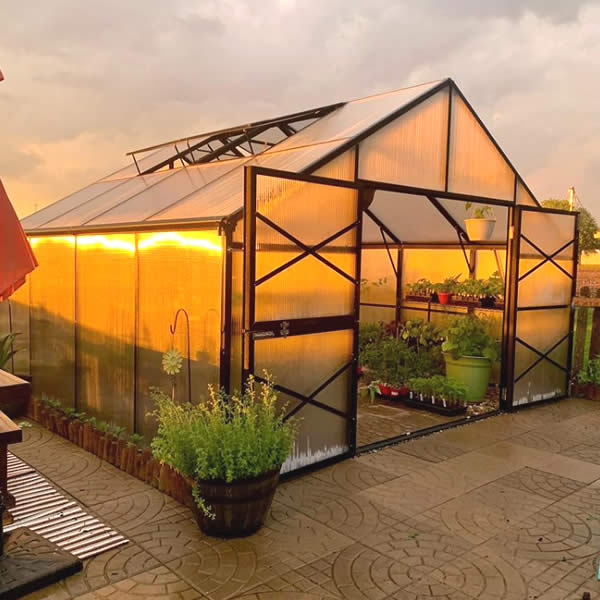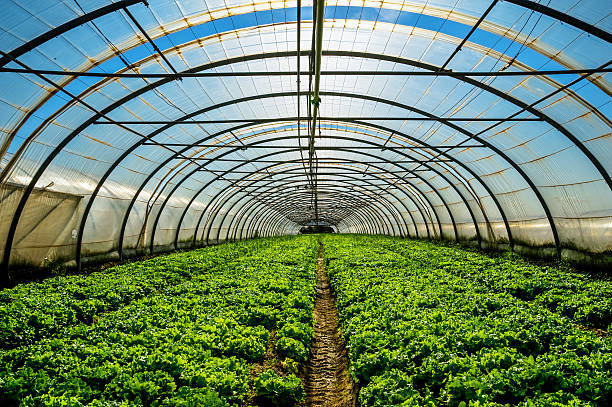The Future of Greenhouses: Developments in Sustainable Farming
Are you interested regarding the future of greenhouses and just how they are transforming lasting agriculture? Look no more! In this post, we will certainly explore the interesting technologies that are paving the method for a greener and much more reliable farming sector. From sophisticated environment control systems to upright farming strategies, water-efficient watering methods, renewable resource integration, and smart data analytics, these innovations are transforming the way we grow our food. Prepare yourself to uncover the future of sustainable agriculture in greenhouses!
Advanced Environment Control Systems
To achieve optimum expanding conditions, you can depend on the improvements in greenhouses with sophisticated climate control systems. These systems have transformed the method we cultivate crops, offering a controlled environment that contributes to plant development. With these ingenious systems, you can currently control temperature, moisture, light degrees, and even CO2 focus to develop the ideal problems for your plants to flourish.
One of the vital attributes of these innovative environment control systems is their capability to regulate temperature level. By making use of sensing units and automated controls, the greenhouse can change the temperature based on the certain requirements of the plants. This makes certain that they are never revealed to extreme warm or cool, which can be damaging to their development.
Humidity control is another critical aspect of these systems. By maintaining the excellent humidity degrees, you can stop problems such as mold, mold, and illness from affecting your plants. These systems can also regulate the amount of light that gets to the plants, guaranteeing that they obtain the ideal amount for photosynthesis.
Furthermore, progressed climate control systems can also manipulate CO2 focus. By raising the degrees of carbon dioxide in the greenhouse, you can enhance plant development and efficiency. This is particularly helpful in areas with low all-natural carbon dioxide degrees.
Vertical Farming Methods
One crucial vertical farming technique is utilizing stacked expanding systems. Piled growing systems are frequently made use of in city locations where space is limited.
One prominent technique is referred to as upright hydroponics, where plants are grown in nutrient-rich water without soil. This strategy is very efficient as it reduces water use by as much as 90% contrasted to standard farming approaches. In addition, given that the plants are grown inside, they are secured from diseases and bugs, reducing the requirement for chemicals.
Another method is aeroponics, which includes suspending the plant roots in a haze or air environment. This approach permits optimum nutrient absorption and oxygenation, causing faster growth and higher returns. Aeroponics also uses less water than standard farming and can be executed in vertical systems, making it a preferred selection for upright farming.
Water-efficient Watering Techniques
Taking full advantage of water conservation is necessary when it concerns implementing water-efficient irrigation methods in lasting farming. With global water scarcity ending up being a pressing issue, it is vital to create cutting-edge methods that optimize water usage in greenhouse operations.
One encouraging approach is drip watering, which supplies water straight to the plant roots, minimizing waste and evaporation. By utilizing a network of tubes with Check Out Your URL small emitters, water is applied gradually and precisely, making sure that plants get the essential wetness without excess drainage.
An additional efficient technique is using dirt dampness sensors. These tools measure the wetness content in the soil and offer real-time information to farmers. By checking the soil's wetness degrees, farmers can properly establish when and just how much water to use, avoiding over-irrigation.
In addition, the application of rainwater harvesting systems is acquiring popularity in greenhouse farming. Gathering rainwater from rooftops and saving it in containers permits farmers to utilize this natural deposit for watering functions, lowering dependence on standard water sources.
Lastly, the adoption of automated irrigation systems can dramatically enhance water effectiveness. These systems use sensors to discover soil wetness levels and climate conditions, readjusting irrigation routines as necessary. By optimizing water use based upon real plant demands, these systems can reduce water waste and promote lasting farming methods.
Renewable Energy Combination
Sustainable energy integration in greenhouses provides several advantages, including reduced operating expenses and lowered reliance on non-renewable power sources. The produced power can then be utilized to run different procedures within the greenhouse, such as illumination, ventilation, and heating systems. These wind turbines harness wind power and transform it right into electricity, which can be used to supplement the energy needs of the greenhouse.
Smart Data Analytics and Automation
To enhance the performance of your greenhouse procedures and enhance resource usage, think about executing smart data analytics and automation. Smart information analytics involves gathering and examining data from various sensing units and tools within additional hints your greenhouse.
This can include automating the control of lighting, air flow, irrigation systems, and nutrient delivery. By automating these procedures, you can ensure that your plants obtain the appropriate problems and nutrients at the appropriate time, without the requirement for constant hand-operated intervention.
Additionally, smart data analytics and automation can interact synergistically. The data gathered by sensors can be utilized to notify automated systems, allowing them to make real-time changes based on the current problems. This integration of information analytics and automation can result in extra accurate and effective resource allocation, inevitably leading to higher returns and much better plant top quality.
Final Thought
Finally, the future of greenhouses in sustainable farming looks encouraging. With sophisticated climate control systems, vertical farming strategies, click for info water-efficient irrigation techniques, and eco-friendly energy integration, greenhouses are ending up being much more environmentally pleasant and efficient. Additionally, using smart data analytics and automation even more boosts performance and minimizes waste. These advancements are paving the way for an extra effective and sustainable farming market, making sure a greener and much healthier future for all.

By enhancing water use based on real plant demands, these systems can decrease water waste and advertise lasting farming practices.
